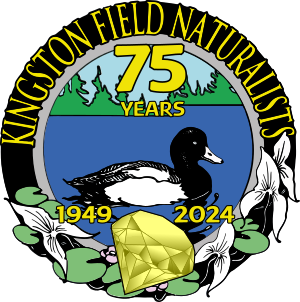KFN encourages people to experience nature and does this partly by providing information about sightings of many species. In particular, notable bird sightings are reported in weekly summaries; members are also encouraged to report their sightings to eBird, “a real-time, online checklist program, that has revolutionized the way that the birding community reports and accesses information about birds” (www.ebird.ca). However, there are certain situations where information about a bird, or other, sighting may be considered “sensitive” and should not be posted on the Internet or elsewhere that would provide unfettered public access to the information.
Why do we need a sensitive sightings policy?
The Internet is a wonderful thing and it makes accessing information about plant/animal sightings very simple. In the vast majority of cases, this access to information does nothing but make it easier for people to find birds or other plants/animals and ultimately connect with nature. However, in some situations making information about a sighting public to everyone, without a way to control who has access to that information, could result in negative impacts to the plant/animal through excessive disturbance.
What is it?
The KFN Sensitive Sightings Policy can apply to any species, depending on the situation. KFN will withhold specific information about a sighting if it is deemed to not be in the best interest of the species involved. Some examples include:
- Roosting owls are particularly sensitive, especially when they occur in areas likely to be visited frequently by birders and photographers. Each time owls are flushed, they use up valuable energy, and are also put at risk from being mobbed by smaller birds and even predated by hawks and larger owls.
- Rare nesting species can also be sensitive, especially if they are likely to attract attention that could repeatedly disturb them in ways such as flushing from the nest, playing audio recordings of the species, or getting too close to the young/nest.
- Rare wildflowers are a target for some people who may, in their enthusiasm to observe them, destroy or damage the plant or its habitat. This is particularly true of some orchid species and even of common wildflowers at heavily used locations.
- Sensitive species are species that are inherently sensitive to disturbance or abuse. Some examples include certain reptiles that are targets of the illegal pet trade or American Ginseng, which is illegally harvested in a destructive manner.
- A rare bird on private property can be sensitive if the private landowner does not wish the presence of the species to be known. For example, a Varied Thrush visiting a feeder in the winter and which the home owners do not wish to be disturbed by people coming to view the bird.
In these examples, the risk is heightened because the plant or animal is likely to remain in an area for a prolonged period of time and may attract considerable attention. However, there are many situations where a species may be present for an extended period of time and be safely (for the plant/animal and the observers) viewed.
In these examples, and other similar situations where a sighting is deemed to be “sensitive”, KFN will not publicise its presence until any threat to the species has passed (for example, after the season has ended and the species has left). All KFN members are encouraged to follow these guidelines, particularly when reporting a species to online bird sightings forums. A general rule of thumb is to err on the side of caution – ask someone (including a KFN executive) before posting a sighting if you are not sure. It should be noted that KFN still keeps track of these sensitive sightings for club records, so you are encouraged to submit that information privately.
The purpose of these guidelines is to balance the needs of the species with the benefit of people having an opportunity to engage with nature.
For more information, email: info@kingstonfieldnaturalists.org
